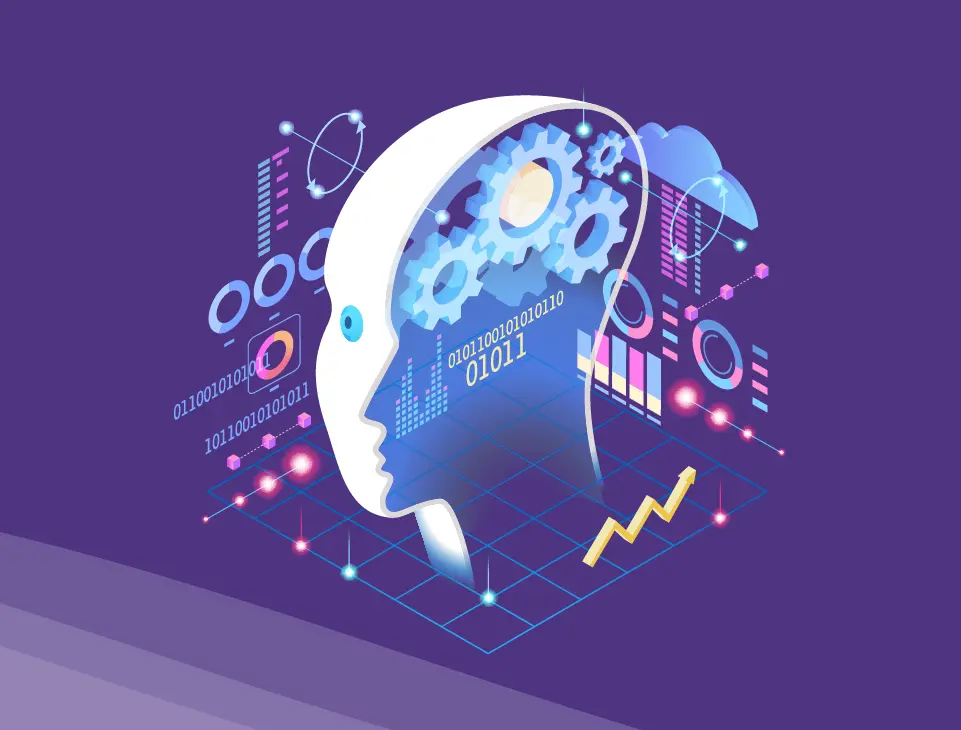
The latest resources on AI
The latest articles, podcasts, videos, events, and case studies produced and collected by the BTS panel of experts.
The latest in AI

Anthropic, the startup behind the generative AI chatbot Claude, recently polled 1,000 Americans, asking: what guardrails and values do you want AI systems to have?
The result? Anthropic’s existing AI principles only overlapped with 50 percent of what the public said they wanted. So, where’s the disconnect?
Anthropic found that the public wanted more "objective information that reflects all sides of a situation” and responses that were easier to understand. Anthropic also noted that the public was "less biased" than Anthropic across nine categories, including age, gender, and nationality.
So what?
The study highlights a broader disconnect between what the technology firms creating AI think people want and what people using these technologies—including your employees and your customers—actually want. This approach mirrors a mistake technology firms made in the past—inviting exclusively technical experts to advise on product design, even though the market for a product is the average consumer.
Now what?
We already know that trust is key to the adoption of AI systems, and that people are less likely to trust and use systems that they can’t control or didn't help to design. One approach to driving more user adoption and trust is soliciting more user feedback.
We also know that there can be a trade-off between control and performance of these systems: for example, allowing users to tweak algorithms to reflect their preferences often leads to reduced performance of the algorithm—thus defeating the purpose of using the system to begin with.
Next steps
Anthropic's findings illustrate a vital strategy for leaders to consider when implementing AI systems: include key stakeholders in AI design. How? By drawing input and inspiration from customers, employees, and partners in addition to your technical experts. The “pro move”? Do this in a way that produces systems that are both adopted and effective.
Put on your jerseys
Getting AI right is a team sport and will require input from a diverse set of talent in your business. Not easy to do, but well worth the effort.

How ready is your organization for AI?
According to AMD, 50 percent of enterprises are at risk of lagging behind in AI adoption. For those that are prepared or preparing, the shift from “What is AI?” to “How do I think strategically about using AI?” has occurred at an astonishing speed. This haste is mission critical – with AI’s potential to disrupt, adopting this new technology fast is essential for businesses who plan to be around five or even ten years from now.While the specifics vary by organization, there are three shifts that all organizations need to make to test their own AI fluency:
- Take A.I.M.Adopting AI goes beyond selecting the right models or services — it requires a blend of Application development, Infrastructure, and Measurable outcomes. In the short term, it is both possible and advisable to tinker with “off the shelf” solutions. In the long term, however, getting the most out of AI will require building a more robust infrastructure that flexes as the technology evolves, ties to the business needs and strategy, and links to the organization’s sought-after outcomes. Therein lies an opportunity to ramp up your team's AI acumen, staying ahead of "I.M." as the technology advances. Creating the expertise in-house and specifically in support of your AI strategy – whether through upskilling, strategic vendor partnerships, or a mix of both – will be the differentiator.
- Tip to get started: Build in a learning and training component to continuously upskill teams on current and emerging AI technologies and their roles in driving the business.
- Get ahead of the risks.Adopting AI is a complex issue, given a heightened awareness around its potential pitfalls. The task requires a level of AI acumen necessary to get and stay clear on the ethical and business-related risks associated with AI, as public and regulatory backlash arises due to issues of bias, security, and misuse. As you develop your AI acumen, you’ll want your team to get ahead of those risks by 1) partnering with firms and 2) investing in technologies that emphasize ethics and accountability in addition to costs and benefits. It can be easy to avoid this element, whether from fear or inertia; because that won’t serve you or your organization well, today is a good day to get ahead of tomorrow's risks.
- Tip to get started: Proactively develop a specific workstream and assign an accountable leader to guide, track, advise and manage the risk component as a core element of your AI strategy.
- Lean in on the people side.Adopting AI is a fundamentally different way of looking at how people work with technology to deliver their work — it’s an act that requires specific mindset shifts and skillset shifts for roles and people across the organization. Such shifts should help leaders, teams, and ultimately the enterprise 1) become comfortable with disrupting themselves, 2) grapple with privacy and data use concerns, and 3) innovate new pricing, product, and process strategies, among others. The challenge – and the opportunity – is to get specific about what needs to change and how to make the change happen, as well as keep up the momentum so that you can get to value more quickly.
- Tip to get started: Consider conducting a culture assessment to uncover the specific organizational and individual mindsets that are most in the way (or conversely, the most leverageable) to drive the kinds of behavior changes you need to adopt AI.
In summary, the business world is making some exciting shifts to capture the benefits of some intriguing technology. By focusing on these three ideas, organizations can successfully become AI-augmented as well. Exciting times ahead!

This will bring superpowers to everyone.
In his speech at a recent Mind the Tech conference, Nvidia CTO Michael Kagan said that Artificial Intelligence (AI) had just had its "iPhone moment." Nvidia is a leading provider of the chips, platforms, and supercomputers that give AI life, so Kagan would know when this moment happened, but — what does he mean by this?
Just as the iPhone popularized mobile computing, generative AI has provided everyone with access to AI tools and algorithms that were once reserved for technical experts: the makers of ChatGPT have pioneered a supercomputer that’s easy for anyone to use. In other words, GAI has democratized AI, making this an "iPhone moment” beyond which everything is going to change. Here’s why you should care.
Seismic changes
- Superpowers for everyone
The ubiquity of GAI in forms such as ChatGPT is significant because of the technology’s applications: simply put, GAI gives people cognitive superpowers. Just as the machines of the industrial revolution gave humans physical superpowers, GAI has done the same for our brains. And our exploration of these powers is just beginning. - Say hello to your (superpowered) AI coworker
Soon, everyone will be able to access an AI coworker with superhuman abilities. They will process oceans of data for you in real time; teach you any topic you want, in any language you want; and generate the content you wish for whenever you do. Talk to them, and they will talk back.You’ll be able to train and improve your coworker using your natural language — no coding skills required. With these AI coworkers at your side, you can be a computer programmer, a content creator, a researcher, an explorer, and more. The possibilities are mostly limited only by our imaginations, so for those who can (or can’t) escape those limitations, the impacts will be profound.
Applications
- What this will look like in the workplace
At the level of company strategy, firms may use GAI to become information producers in their specific domains. This information will be leveraged internally to improve operations or sold externally inside of products and solutions that will surprise and delight customers.At the level of roles and functions, employees will access AI coworkers to gain superhuman assistance for role-specific tasks. For example, HR teams will access AI coworkers to help with recruitment and talent management, while supply chain managers will work with AI to improve logistics and planning.
While the powers we’ll gain from AI will be remarkable, as the Spider-Man adage goes, “With great power comes great responsibility.” Leaders and employees alike will need new skills to use their new powers wisely, including discerning when to trust an AI's recommendation, how to judge those recommendations, and how to inform their judgements using shared ethics.
- Be a better co-worker. To get the most out of our AI coworkers, we will also need to improve our own AI fluency. This will include learning how to interact with AI systems, how to integrate them into our projects and workflows, and how to interpret, value, and improve their output.
With all this in mind, prepare to seize the moment. In 1998, roughly ten years before the iPhone, Steve Jobs said, "Innovation is about the people you have, how you're led, and how much you get it." He might say the same about this particular iPhone moment if he were alive today. It’s an exciting time in history for us to collectively to “get it,” making the most of the powerful, positive impacts GAI can bring to our lives.

lorem ipsum

lorem ipsum

lorem ipsum

lorem ipsum

Ready to start a conversation?
Every successful transformation begins with a meaningful conversation. Connect with us to explore how BTS can partner with you to make the shift.
